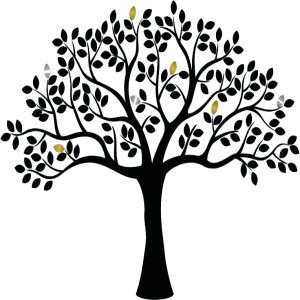“For me, this was the seminal origin story of my family. And key details proved to be untrue.”
For family historians, oral tradition can be an invaluable treasure. My aunt Mildred Hovick Monge (1907–2003), our first family historian and my inspiration, collected so much of it in her memoirs, Remember, “Niblits and Bits,” and “Life on Board the Twentieth Century, Ltd.” Rich in detail, they tell the intimate stories of our ancestors, things that historical records, with their dates and locations, can only hint at. Those of us further down the Hovick family tree will forever be grateful to you, Aunt Mimi.
At the same time, human memory is an imperfect thing. Stories can change with retelling; details can be embellished or forgotten. Oral history can be like a decades- and generations-long game of telephone, resulting in a tale much changed from the original facts.
I was thirteen when Remember was published, and in particular, Mildred’s tale of my great-grandfather, Mikkel Braaten, utterly captivated me. Filled with tragedy, adversity, and survival, this single story ignited my life-long passion for genealogy. Here are the five paragraphs that so moved me as a youth:

“Angry and hurt at the blows Life had dealt him, Mikkel Brotten [Braaten] turned to his children standing along the boat rail watching the shores of Norway disappear from view and vehemently said, ‘Jeg haaper jeg aldrig ser dig igjen, Norge.’ Translated: ‘I hope I never see you again, Norway.’
“Mikkel was born [in 1840, so we thought] in Hedemarken in Northern Norway and grew up there working as a carpenter. He married Anna Tønset who bore him seven sons and daughters, six of whom were with him now on this trip to America. Recently his wife Anna had died of cancer, making the hardships almost unbearable for him…
“With him were Martin, Mina, Severine, Henry, Tonette (Nettie to us), and Anna Marie. Mikkel stood observing them with compassion, wondering what they were thinking as they huddled together onboard ship. Would they soon be able to forget all the nights they had gone to bed hungry? Often times their supper consisted of nothing more than boiled potato peelings. Could the letters from America, with their promise of plenty for them really be telling the truth? Would all these hopes come true? Would they compensate for the break away from their home? For Home it was to them, in spite of the hardships. Time would tell.
“Ahead of them were weeks onboard ship, crowded together with all the other passengers in very tight quarters with only blankets draped between families for a semblance of privacy. Seasickness plagued most of them, and with no clothes-washing facilities, the vomit and diarrhea dried on their clothing, causing a terrible stench in the airless quarters below deck. Their food, brought from home, became scarce toward the end of the trip and was often spoiled due to the lack of refrigeration. The women had to take turns at the stove in the ship’s kitchen cooking for their families after the ship’s cook had served the crew of sailors. Water was at a premium. The fear of sickness and death at sea was constant.
“But Mikkel and all six children survived. Pauline [his daughter, my maternal grandmother] says he shuddered at the thought of his trip as he told it in later years.” [1]
For me, this was the seminal origin story of my family. And key details proved to be untrue.
Extensive research, delving into both Norwegian and American records, revealed:
- Mikkel had not been born in 1840 in northern Norway.
- Anne had not died in Norway, but in Minnesota.
- Mikkel and Anne only had three children in Norway, the other four in Minnesota.
- Mikkel immigrated, not with his children, but with his sister and her family (Anne and their then-three children followed him one year later).
I have described this research, and its convoluted paths, in an article—a proof argument—entitled “Who Were the Parents of Mikkel Braaten?” that will be published in the Autumn 2020 edition of Minnesota Genealogist, the quarterly journal of the Minnesota Genealogical Association. Because of its publication there, I am not allowed to reprint the article here. But you can read my biography of Mikkel and find out all I learned.
So, how should we think of our oral tradition in light of these hard, historical facts? Rather than history invalidating tradition, I believe it only serves to enrich it. Research has revealed so much more about his life than I ever dreamed we’d know. But in the end, despite these historical revelations, the core of Mikkel’s story remains unchanged. Starvation drove them from Norway, he endured a torturous journey across the Atlantic, and the promise of America, at least for him and his family, proved to be true.
Thank you, Aunt Mildred.
[1] Mildred Hovick Monge, “Remember,” family history, 1974; “Remember,” blog entry, Hovick Lohman History, blog (hovicklohmanhistory.wordpress.com/2020/08/26/remember/ : accessed 30 August 2020), pdf, pt. 1, ch. 4, “Recollections with Pauline,” p. 45 (printed).

